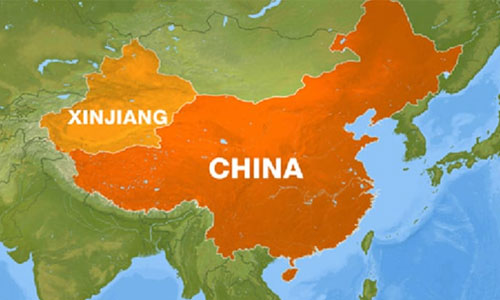No place tells the story of the Belt and Road Initiative (BRI) better in practice than China’s Xinjiang Uygur autonomous region, bordering eight countries including Afghanistan, which has turned from a remote border region into a forefront for international logistics services. The operation of railroad logistics in Xinjiang started with only four international lines in May 2016. Now 19 lines are available, covering 24 cities of 17 Asia and European countries; 3,600 tons of cargo are handled per day. The transportation time of China-Europe freight trains has been cut from 22 days to 15 days with the improved schedule arrangement. The cost of rail freight is only 20 percent of the cost of moving cargo by air and it is three times quicker than shipping by sea, In short, the once windswept and mountainous route for horseback traders has now changed into a bustling hub of business and culture as 70 percent of westbound freight trains pass through it, with the roar of locomotives drowning out the howling wind.
Historically, Xinjiang was the bridge to link the transport of Eurasia Continent, the channel of exchanges of civilization, and the “Silk Road” that connected the civilizations of the ancient East and West. Moreover, Xinjiang was the gateway of Chinese civilization opening to the West.
Since Xinjiang is rich in wind power, the gradually accelerated wind power construction has greatly pushed forward the development of Xinjiang’s wind power equipment manufacturing.
Similarly, Xinjiang has profound cultural accumulations which is reflected in rich ethnic customs and famous historic and cultural sites. Having a media tour in Xinjiang themed “The Core Zone (Xinjiang) of the ‘Silk Road Economic Belt’ Media Event”, I have visited Museum of Xinjiang Uyghur Autonomous Region, which is a window to scratch the surface of Xinjiang’s ancient monuments and cultural relics. Explaining China’s history, an excerpt of a script attached on the Museum’s wall read, “Tang Dynasty [founded in 618] also enhanced frequent exchanges with the Central Asian, West Asian and European countries, which formed the economic and cultural prosperity of China’s feudal society, so the history of the Western Regions entered a new era”.
It is self-evident that the ancient Silk Road has been one of the oldest and longest commercial routes for exchanging commercial goods, knowledge, and culture of humankind that linked some of the biggest civilizations of the world, namely, China, India, Greece, Buddhism and Islamic Cultures to one another.
Islamic culture is seen widely in Xinjiang, which is Muslim dominated region. Briefing delegates from some 30 media in Islamic Institute of Xinjiang, built by Chinese government in 2017, Tumaniyaz, the President of the Institute, said that the Institute had teaching building, administration building, library, and indoor stadium and eight branches had been operating under the Institute with the capacity of receiving 3,000 students. He added that Chinese culture and history and religious knowledge, including Holy Quran and Hadiths, were taught in the institute. To my unmitigated surprise, students could recite Holy Quran and speak Arabic Language. Students were also paid about RMB 4,000 to 8,000 per year, the President said.
Similarly, the Buddhist culture is widely tangible across China, mainly in Gansu province, a sister city to Afghan province of Bamyan. I vividly remember when I visited Giant Buddha and Mount Emei Temple in Leshan City, Sichuan province of China, as well as Mogao Caves in Gansu province.
To put it in other words, the Silk Road has been a route for not only commercial exchanges but also cultural and people-to-people exchanges. Both tangible and intangible culture has been spread across China through ancient Silk Road, which is intended to be revitalized in the frame of the Silk Road Economic Belt and 21st Century Maritime Silk Road, known shortly as ‘the Belt and Road Initiative’.
Xinjiang, which borders Afghanistan province of Badakhshan, has much in common with Afghanistan. For example, if you visit Aksu City, you will see very similar food to that of Afghanistan. It is also very rich in terms of agricultural product, mostly fruit, similar to many provinces of Afghanistan.
Since Afghanistan has joined the BRI, it has to extend its relation with China so as to pursue mutual benefit, not only in terms of trade, but also knowledge and culture. It is a highly appropriate saying which goes in Chinese that if you want to develop, you need to build road first, indicating that connectivity plays the best role in the development of a nation and country. Thus, as China is ready to share the fruit of its development with the world, including its neighboring country Afghanistan, we need to learn from China.
Home » Opinion » Afghanistan to Learn from Economic Development of China’s Xinjiang
Afghanistan to Learn from Economic Development of China’s Xinjiang
| Hujjatullah Zia

